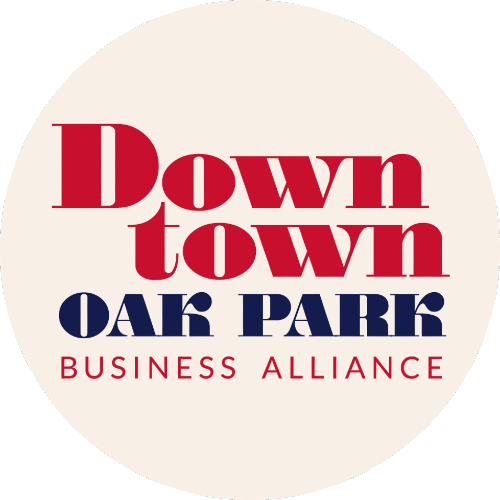Target, Old Navy, Sephora, Sweetgreen, and Firecakes Donuts all border the Westgate shopping district. This part of downtown Oak Park is also home to a significant part of our community’s Black history.
History that had long since been buried and forgotten until 2022. The Village of Oak Park, in collaboration with other community organizations, Oak Park Reparations Task Force, Walk the Walk, Black Residents of Oak Park, Oak Park River Forest Museum, and Oak Park Area Arts Council, dedicated a plaque to Mt. Carmel, the first Black Baptist Church in the area.

“This plaque commemorates the early Black residents of Oak Park who overcame great odds to build community in a town that did not always welcome them. We thank them, we honor them, and this plaque will stand forever in their memory.”
The story behind this plaque is one of discrimination and determination. In the early 1900s, Black Oak Park villagers attempted to establish a Baptist church. They bought land and obtained a building permit. Soon after, the permit was rescinded due to pressure from white community members. The land was then resold to white villagers.
Not to be deterred, the Black villagers moved onto another location – what we now know as the 1100 block of Westgate. A year later, on June 18, 1905, they celebrated the dedication of the cornerstone of Mt. Carmel Colored Baptist Church. After the church was built, it was the epicenter of the Black community, providing their spiritual, social, and political needs.
Then, on Christmas Day, 1929, the church was set on fire. Unable to raise the money needed to repair the church, it was demolished, along with the surrounding neighborhood, which was home to the Black community in Oak Park for almost twenty-five years.
According to Nancy Alexander, an Oak Park resident and educator, “We lost a meeting space, we lost a religious school, we lost a source of local news and information, we lost a music center and a concert hall, we lost a pulpit for public speaking, and we lost a recreation center. We lost the heart and soul of Black Oak Park. But most egregiously, we lost the collective wealth that was the value of this land — the rock upon which generational wealth is built in this country.”
The next time you run errands, we encourage you to stop at the Mount Carmel Church of Oak Park plaque. If you are interested in learning more about Black history in Oak Park, go to The Book Table and request a copy of Suburban Promised Land: The Emerging Black Community in Oak Park, Illinois, 1880-1980, written by Stan West, Peggy Tuck Sinko, Frank Lipo, and Yves Hughes Jr.
